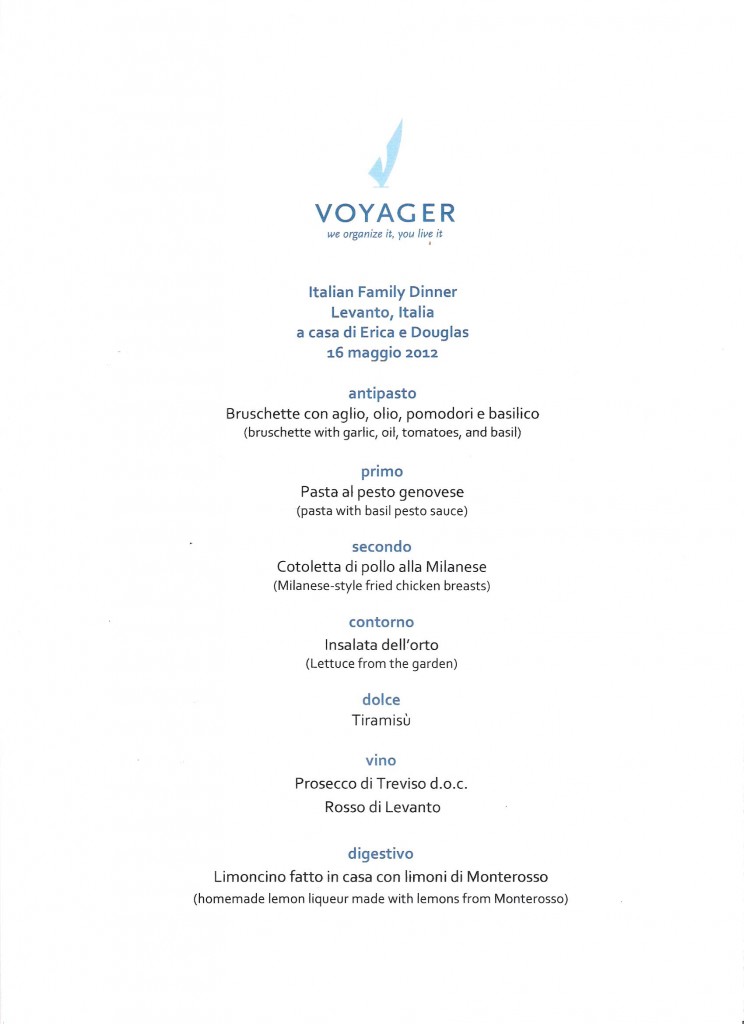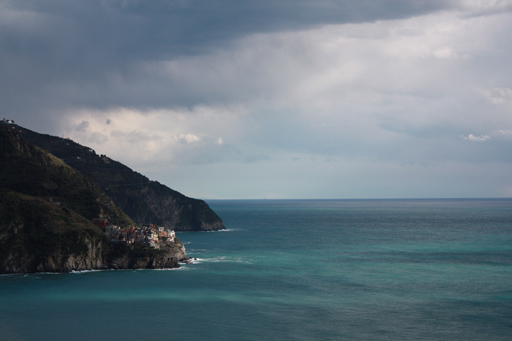A few days ago we hosted a wonderful American couple who had come to our home to experience something we call The Italian Family Dinner. When traveling, it can be nice to have a home-cooked meal once in a while, and so we open up our doors to travelers interetsed in getting a bit more than just fed.
The experience reminded me of how foreign the experience of dining out in a restaurant (or trattoria, or osteria, or pizzeria) can be for a tourist in Italy, and so I thought it would be nice to provide a very simple, practical guide:
- The Courses: Italian cuisine is divided very rigidly into courses. ANTIPASTI = APPETIZERS. PRIMI = PASTA AND RICE DISHES. SECONDI = MAIN DISHES OF MEAT AND FISH. CONTORNI = VEGETABLE SIDE DISHES. DOLCI = DESSERTS. While this can seem daunting, don’t feel pressured into ordering something from every course. Almost no one does. It’s much more common for people to order two things (one appetizer and one pasta dish, one appetizer and one meat dish, one pasta and one meat, etc.) and then maybe get dessert later. Get what you want. (Though it should be said that if there are four of you and all you order are 2 plates of pasta and 2 appetizers, you’ll get looked at funny.)
- Prices: Italian restaurants ALL charge a small fee (usually between 2 and 4 euros) per person for occupying a seat. It’s called the COPERTO, and goes toward covering costs for bread and service. It’s no use getting angry about it, it’s always there. Prices listed on the menu are always with tax included, so it is the effective price that you will find on your check.
- Tipping: There is no tipping in Italy. None. If you’re in a restaurant that hints (or explicitly asks) for tips, then you’re in a tourist trap. Wait staff is paid a regular salary by the restaurant (and like everyone else, has free universal health coverage) and doesn’t survive on tips. So you don’t have to add tips (or tax) into your bill. That said, if you’re getting pressured for a tip and don’t feel comfortable saying no, just cough it up. Sometimes it is better to go with the flow rather than ruin your vacation. You’ll know better the next time.
- Seatings: The vast majority of restaurants in Italy have one seating per night. This is not true only in highly touristy areas where they might squeeze in two. This means that the table is yours for the entire evening. Enjoy it. It can be refreshing not to feel like you’re being hustled from your chair by a waitress who is hoping for another seating and more tips. Because of this, if you want the check, you’ll have to ask for it. No one would dream of bringing it to you before you are ready for it, and they only know you’re ready because you ask.
- Service: By keeping turnover to a minimum, restaurants also keep staff to a minimum, and so service will be slow. Not slow as in incompetent, simply slow as in not rushed. Italian waiters are professionals, and they know what they’re doing, but they have to handle a larger number of tables than their American counterparts, so it takes more time. Don’t get frustrated. Sit back, drink the wine, and remember that no one is breathing down your necks to finish your meal anyway.
- Salads: The culture of gigantic salads filled with everything imaginable has not really taken hold in Italy, though some places will offer them at lunchtime for workers eating in a hurry. They are called Insalatoni. Otherwise, salad in Italy is lettuce. Nothing else. And salad dressing in Italy is olive oil, salt, and vinegar. Nothing else.
Food should be a highlight of any trip to Italy, so dive into the experience. Try the strange ingredients you never see at home (I remember my 7 year old nephew eating squid tentacles with great gusto once in Rimini) and always remember to slow down. It’s better for your digestion anyway.



